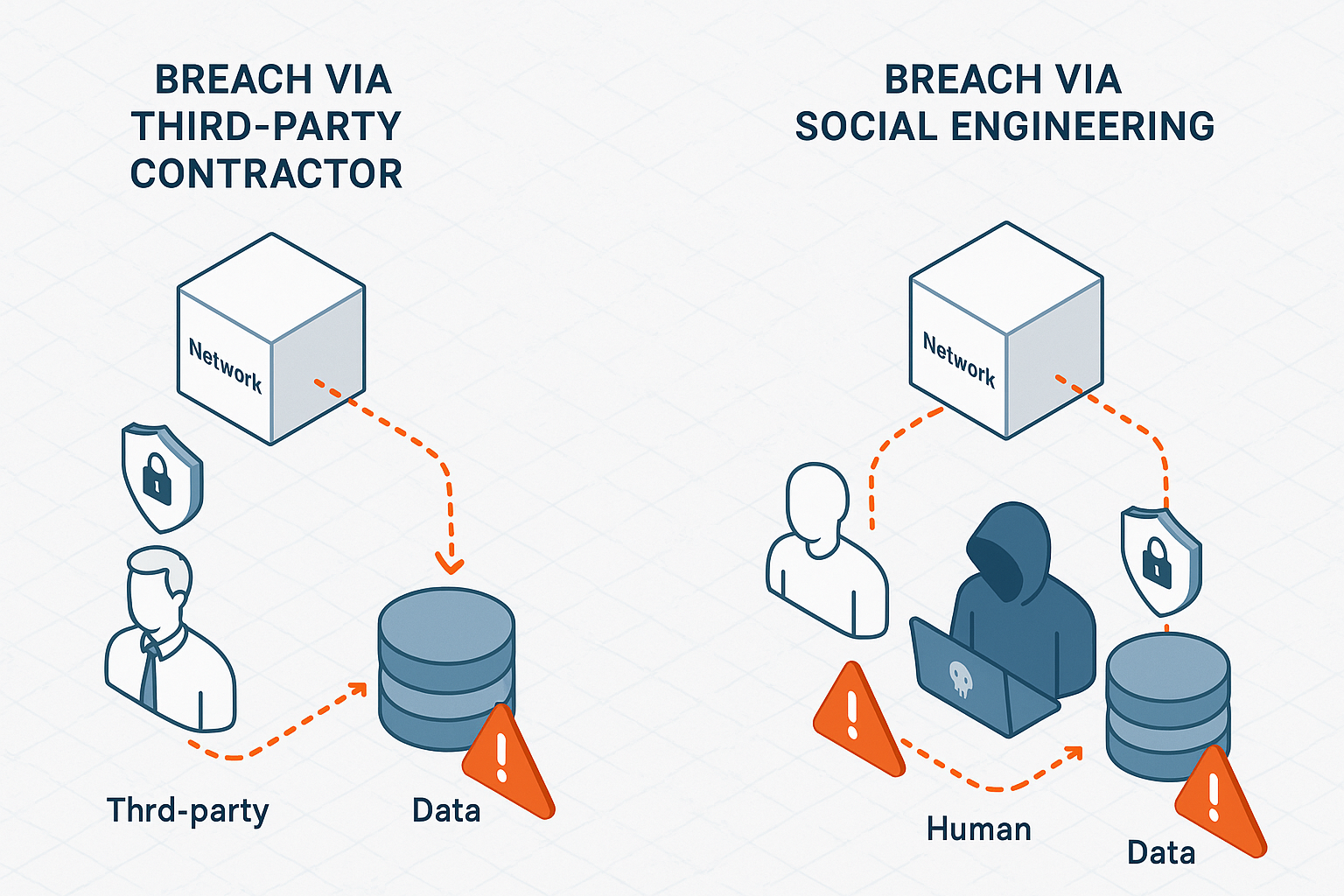A Tale of Two Breaches: AT&T and Coinbase Exposed
When Cybersecurity Falls Short—Twice
In a digital world where your personal data has more frequent flyer miles than you do, the last 48 hours delivered a double whammy. AT&T and Coinbase, two behemoths in their respective industries, both found themselves at the heart of high-profile cyber breaches. With millions affected and trust shaken, these incidents are far more than isolated tech blunders—they’re a mirror reflecting the current weaknesses in our digital defenses.
As hackers, insiders, and increasingly daring cybercriminals keep raising the stakes, the twin failures offer a sobering lesson: our digital security is only as strong as its weakest (often human) link.

Dissecting the AT&T Breach: When Size Doesn’t Matter
The AT&T situation stands out, not just for its sheer magnitude—86 million customers compromised—but for the stark message it sends. No organization, regardless of resources, is immune. The breach wasn’t a sophisticated work of art but a blunt-force reminder that even telecom giants trip on their own security shoelaces.
The Third-Party Boogeyman
What really puts the sting in AT&T’s tale is the role of external partners. According to the 2025 Verizon Data Breach Report, third-party involvement in breaches has doubled, shifting the spotlight from just internal vulnerabilities to a tangled web of vendor risks. In this sprawling ecosystem, a chain is only as strong as its least vigilant contractor.
Coinbase: When Humans Are the Vulnerability
Coinbase’s breach, on the other hand, wasn’t about brute-force hacking or clever malware. It was about simple bribery—contractors getting cozy offers to share access. This scenario exposes the soft underbelly of cybersecurity: human nature. No firewall or encryption can outwit a well-timed envelope of cash (or its digital equivalent).
The Persistent Threat of Ransomware
The FBI’s warning is clear: Ransomware gangs like Play aren’t slowing down. Over 900 organizations have been breached by such attacks, underlining that today’s threat actors mix technical prowess with psychological manipulation. The Coinbase incident personifies this shift—phishing isn’t the only trick in the book; manipulation is the new malware.
Regulations Rise, But So Do Breaches
These breaches don’t just menace reputations; they emerge amid a climate of tightening regulations. GDPR and copycat rules worldwide are supposed to keep companies in line. Yet, as the Verizon report notes, compliance is no panacea. Ransomware and data leaks thrive, especially among smaller businesses with fewer defenses and tighter budgets.
A Paradox in the Age of Advanced Security
One might expect better results from next-generation security tools and AI-drenched analytics. Yet, the paradox is harsh: breaches are ballooning. Are we missing the mark, focusing on firewalls while ignoring the fallibility of humans and the risks of an overextended partner network?
Redefining Cybersecurity: Lessons and Ironies
The twin breaches offer a clarion call. Cybersecurity must become holistic, treating human vulnerabilities and third-party risks with the same urgency as technical gaps. AT&T and Coinbase now sit alongside countless others in the breach hall of fame—let’s hope their lessons are heeded, not just uploaded into next quarter’s compliance training video.
The Clock Is Ticking—Your Move
Whether we start teaching AI to spot bribery or just sharpen our collective skepticism, one thing is certain: the current approach needs a reset. Otherwise, soon everyone’s data will be up for grabs, and the only ones left with privacy will be the hackers themselves.



